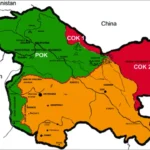Bilateral partnership aims to boost digital defense, counter cybercrime, and protect critical infrastructure
Tokyo, June 1, 2025 — In a landmark development in international digital defense, Japan and the United States have formally pledged to intensify their cooperation on cybersecurity, signaling a robust joint response to the rising tide of cyber threats from state and non-state actors.
Announced during a high-level strategic meeting held in Tokyo, the agreement outlines new frameworks for information sharing, joint training exercises, critical infrastructure defense, and rapid response protocols. This move reflects growing concerns about cyberattacks targeting national security, financial systems, and democratic institutions in both countries.
A Strategic Digital Alliance
The pact was signed between Japan’s Ministry of Internal Affairs and Communications and the U.S. Department of Homeland Security, with additional support from defense, intelligence, and tech agencies on both sides. The new cybersecurity roadmap is expected to serve as a foundation for future cooperation in areas such as artificial intelligence (AI), data privacy, and cybercrime prevention.
“Cybersecurity is national security,” said Alejandro Mayorkas, U.S. Secretary of Homeland Security. “Through this partnership, we are building digital resilience not only for our two nations but for the broader global democratic community.”
Japan’s Minister for Digital Affairs, Taro Kono, echoed the sentiment, stating, “Our cooperation with the U.S. is essential in safeguarding critical infrastructure, ensuring trust in digital services, and deterring malicious cyber activities.”
Key Components of the Agreement
The U.S.–Japan cybersecurity initiative includes several forward-looking features:
- Real-Time Intelligence Sharing: Establishing secure digital channels between cybersecurity centers in Tokyo and Washington for the exchange of threat intelligence.
- Joint Cyber Drills: Conducting annual cyber warfare simulations involving both governments and private sector partners to test readiness and coordination.
- Critical Infrastructure Protection: Developing joint protocols to defend vital systems, including power grids, financial institutions, healthcare networks, and transportation systems.
- Cyber Workforce Development: Launching exchange programs and joint training initiatives to address the global shortage of skilled cybersecurity professionals.
- Public-Private Collaboration: Encouraging tech companies, telecom providers, and cloud infrastructure operators to actively participate in coordinated cyber defenses.
Addressing Common Threats
The renewed collaboration comes at a time when both nations are facing increasingly complex cyber challenges. Attacks on supply chains, ransomware campaigns, and digital espionage activities have grown more sophisticated and frequent.
In 2024, Japan’s financial institutions experienced a series of coordinated attacks that briefly disrupted ATM networks, while the U.S. faced high-profile breaches involving federal agencies and Fortune 500 companies. Intelligence sources suggest that many of these intrusions were linked to advanced persistent threat (APT) groups backed by foreign governments.
“Our adversaries are becoming more coordinated and aggressive in cyberspace,” said Christopher Krebs, former director of the U.S. Cybersecurity and Infrastructure Security Agency (CISA), now serving as a special adviser in the initiative. “Only through global alliances like this can we level the playing field.”
Implications for the Indo-Pacific Region
Analysts view the enhanced cybersecurity agreement as part of a broader strategy to promote digital stability in the Indo-Pacific, a region increasingly vulnerable to cyber manipulation and digital warfare.
With China’s growing tech dominance and North Korea’s ongoing use of cyber tools for espionage and financial attacks, Japan and the U.S. are strengthening their alliance to provide a strategic counterbalance.
“This partnership sends a strong message to hostile actors,” noted Dr. Yuki Matsumoto, a cybersecurity analyst at Keio University. “Japan and the U.S. are not only protecting their own infrastructure but are creating a cybersecurity framework that allies in Southeast Asia and Europe can learn from.”
Looking Ahead
The bilateral cybersecurity plan includes benchmarks and review mechanisms, with the first formal progress report scheduled for Q1 2026. The partnership also opens the door to expanded trilateral and multilateral cooperation, especially with allies like South Korea, Australia, and the European Union.
Both countries have emphasized that their approach is grounded in transparency, democratic values, and respect for human rights, setting it apart from authoritarian models of cyber governance.
Conclusion
Amid the fast-changing landscape of cyber threats, the Japan–U.S. cybersecurity partnership represents a forward-looking move to build a safer and more robust digital environment. With strategic cooperation, shared intelligence, and united defenses, the two nations are poised to lead by example in the global fight against cybercrime and digital aggression.





